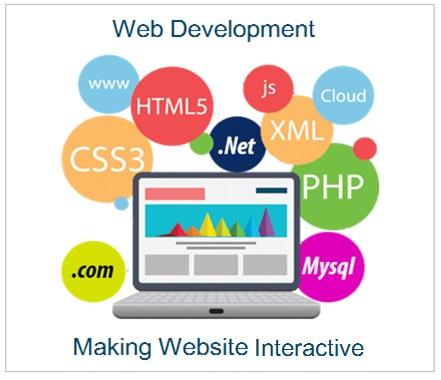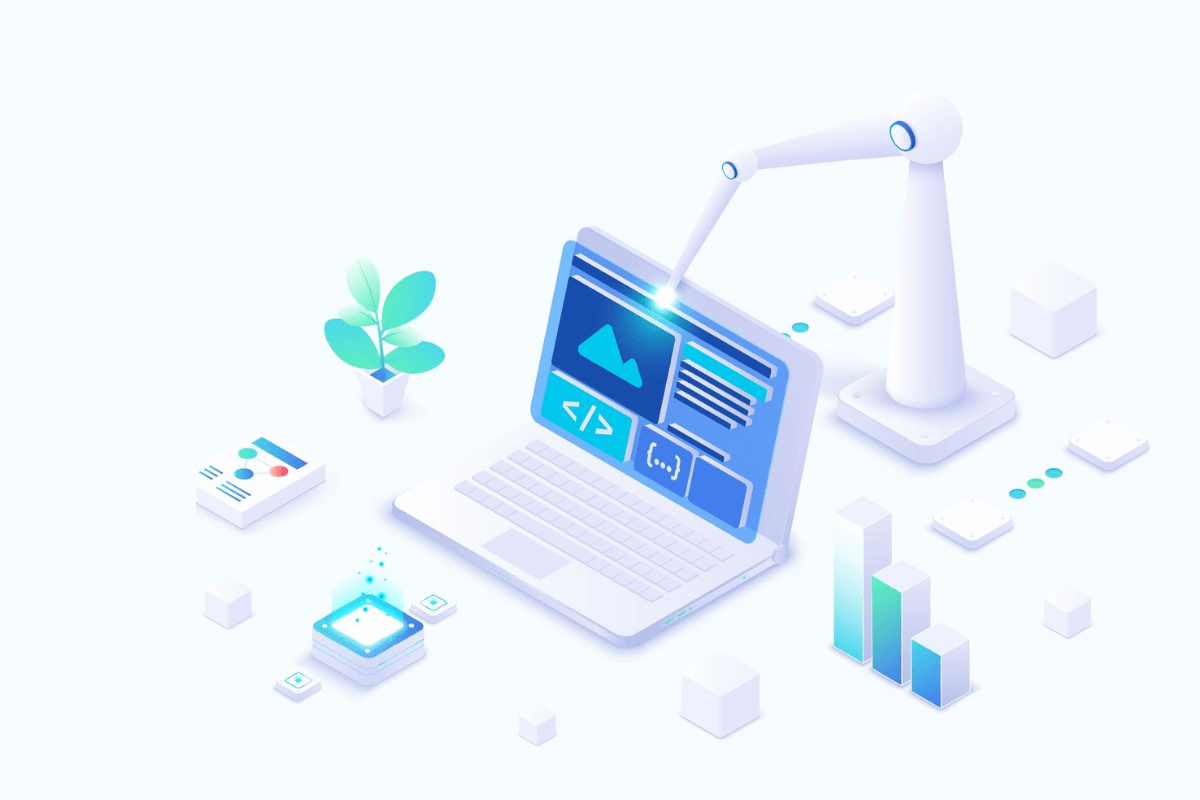Discover why responsive web design is necessary for modern user experience
Checking Out the Different Kinds of Website Design and Their Unique Benefits
The landscape of Web layout encompasses a selection of designs, each offering distinctive advantages that accommodate various customer needs. Flat and minimalist designs stress clearness, while receptive and worldly styles enhance adaptability throughout tools. Typography-driven and illustrative methods intend to enhance interaction and emotional resonance. Recognizing these diverse kinds can considerably influence customer experience and brand perception. What lies below the surface area of these layout choices?
Minimal Web Style

Minimal Web layout frequently incorporates a limited color scheme and uncomplicated typography, which not just boosts appearances yet additionally reinforces brand identity. The reduced intricacy can lead to faster filling times, better improving customer satisfaction. Additionally, by lessening visual clutter, users can engage with content extra properly, causing enhanced understanding and retention. Overall, minimalist website design cultivates a seamless customer experience, making it a popular choice for brands aiming to communicate clearness and expertise in their on-line visibility.
Receptive Web Layout
Receptive Web design has come to be necessary in today's digital landscape, making certain mobile compatibility for individuals across various tools. This strategy substantially improves customer experience by providing smooth navigation and access, despite display size. As even more people access the Web on tablets and smartphones, the relevance of responsive style remains to grow.

Mobile Compatibility Relevance
As smart phone usage continues to increase, guaranteeing internet sites are compatible with different screen dimensions has actually come to be necessary for effective communication and involvement. Mobile compatibility, typically achieved with receptive website design, enables web sites to adapt perfectly to smart devices, tablets, and various other tools. This adaptability not only gets to a broader target market however additionally boosts brand name credibility. An internet site that functions well on mobile gadgets mirrors expertise and interest to individual demands. Furthermore, internet search engine focus on mobile-friendly websites in their positions, making compatibility an important element for on the internet presence. By purchasing mobile compatibility, organizations can improve their digital existence and deal with the expanding number of users who access information on the go. Focusing on mobile-responsive style is crucial in today's digital landscape.
Improved Customer Experience

Apartment Layout
Flat layout is a minimal method to Web design that emphasizes simplicity and clarity. By eliminating three-dimensional aspects such as gradients, textures, and shadows, level style produces a visually appealing user interface that focuses on material and functionality. This style advertises an intuitive navigation experience, as customers can promptly determine key attributes and actions without interruption.
Among the main benefits of level style is its responsiveness across numerous tools and screen dimensions. Its clean lines and uncomplicated designs adjust effortlessly, guaranteeing a regular experience for customers on mobile, tablet, or desktop computer platforms. Furthermore, level layout commonly incorporates strong colors and typography, enhancing visual influence and brand acknowledgment.
The simpleness inherent in level design leads to quicker filling times, which contributes positively to customer contentment. In general, level design stays a preferred choice for contemporary Web development, lining up with contemporary visual choices while providing outstanding functionality
Material Style
Material Layout represents a style language created by Google that concentrates on producing a cohesive and intuitive user experience across digital platforms. This approach emphasizes the usage of grid-based layouts, responsive computer animations, and depth results such as lighting and darkness, which assist to produce a sense of pecking order and spatial partnerships. By mimicking the real world, Material Style allows users to engage with digital user interfaces in a much more interesting and all-natural fashion.
Among the crucial benefits of Product Layout is its versatility across various devices and display dimensions, making certain a constant experience for customers. Furthermore, it promotes a clear aesthetic language that enhances use, making it less complicated for customers to navigate intricate applications. The unification of vibrant shades and vibrant typography likewise plays a necessary duty in accentuating essential aspects, thereby improving total individual interaction - website design. Product Layout has actually become a prominent choice amongst developers seeking to develop visually enticing and useful web sites.
Typography-Driven Layout
Typography-Driven Layout concentrates on the strategic usage of type to boost the useful and aesthetic elements of a site. This design method focuses on fonts, font sizes, spacing, and hierarchy to develop visual passion and guide user experience. By very carefully choosing typography, developers can communicate brand identification and evoke emotions, making the content a lot more appealing and available.
Efficient typography boosts readability and usability, ensuring that users can conveniently browse the site and take in details. The best combination of kind can likewise develop a clear aesthetic power structure, enabling customers to swiftly identify essential messages and calls to action.
Additionally, a typography-driven approach can be adjusted to numerous tools, making certain uniformity throughout platforms. This versatility is vital in today's multi-device landscape, where individual experience is critical. Eventually, Typography-Driven Design offers not only as a creative choice yet likewise as a useful aspect that great post to read significantly influences a website's performance.
Illustrative Website Design
Illustrative website design employs aesthetic storytelling techniques that can substantially improve user involvement. By integrating unique images, websites can produce a remarkable brand identity that reverberates with their target market. This approach not just mesmerizes site visitors however additionally communicates messages in an aesthetically engaging fashion.
Visual Storytelling Strategies
A multitude of Web designers employ aesthetic narration strategies to create interesting and immersive user experiences. This strategy combines typography, design, and imagery to narrate a tale that reverberates with customers on an emotional level. By integrating compelling visuals, designers can properly convey messages and evoke feelings, leading visitors with a brand name's journey. Infographics, animations, and interactive elements offer to improve stories, making intricate details a lot more memorable and accessible. In addition, aesthetic storytelling can establish a natural brand identity, as regular imagery and styles strengthen core worths and messages. Inevitably, this method not just mesmerizes users but additionally cultivates a much deeper link with the material, urging exploration and retention. Via knowledgeable application, visual narration changes basic Web experiences right into vibrant and purposeful interactions.
Enhancing User Interaction
Effective Web design substantially boosts customer involvement by leveraging illustrative components that draw interest and foster communication. Pictures can streamline complicated navigate to these guys principles, making them more unforgettable and friendly for customers. They damage the dullness of text-heavy web pages, developing visual breaks that welcome exploration. Furthermore, special pictures can stimulate feelings, encouraging individuals to attach with the content on a much deeper degree. Interactive elements, such as computer animations or hover impacts, can additionally boost interaction by inviting users to get involved proactively instead of passively eating info. This approach not just maintains visitors on the site much longer but additionally boosts the possibility of return visits. Inevitably, effective illustrative website design transforms the customer experience, making it much more enjoyable and impactful.
Branding Via Illustration
Visual aspects play a significant duty in shaping a brand name's identification, and illustrations are an effective tool in this respect. Illustrative Web layout permits brands to convey their distinct character and This Site values via custom art work. This method promotes a deeper emotional connection with the target market, enhancing memorability and engagement. By integrating images, brand names can distinguish themselves in a jampacked industry, creating an unique aesthetic story that reverberates with their target demographic. In addition, pictures can streamline intricate ideas and make content extra obtainable, successfully interacting messages in an interesting way. On the whole, branding through picture not just enhances the user experience however additionally enhances brand recognition, making it a valuable technique for organizations aiming to establish a strong on the internet existence.
Regularly Asked Concerns
Just how Do I Pick the Right Website Design Type for My Company?
To choose the best Web layout kind for a company, one need to assess objectives, target audience, and market criteria. Evaluating individual experience and capability will direct the choice process for perfect involvement and performance.
What Tools Are Best for Developing Different Web Layout Designs?
Popular tools for creating varied Web design styles consist of Adobe XD, Figma, Sketch, and WordPress. Each deals distinct features tailored to different layout needs, making it possible for developers to develop functional and visually attractive internet sites effectively.
Just How Much Does Specialist Web Style Typically Expense?
Professional Web design generally costs between $2,000 and $10,000, relying on intricacy, functions, and designer knowledge. Customized options and recurring maintenance might increase expenses, while themes can use even more economical options for simpler tasks.
Can I Integrate Numerous Web Style Enters Properly?
Yes, integrating several website design kinds can be reliable. By incorporating aspects from various designs, designers can create special, appealing individual experiences that cater to varied target markets while enhancing performance and visual appeal.
Just How Do Layout Trends Influence User Experience and Engagement?
Style fads greatly influence customer experience and interaction by boosting visual allure, boosting navigating, and fostering emotional links - web development. Remaining upgraded with trends enables developers to develop instinctive interfaces that resonate with individuals and urge prolonged interactions
Flat and minimal styles stress clarity, while receptive and material designs boost flexibility across gadgets. It may appear counterintuitive, minimal Web layout emphasizes simpleness to boost user experience. Responsive Web design plays a vital function in improving customer experience by ensuring that a website adapts seamlessly to numerous screen sizes and tools. Level layout is a minimal technique to Web style that highlights simpleness and clarity. Material Layout stands for a layout language developed by Google that focuses on creating a natural and instinctive customer experience throughout digital platforms.